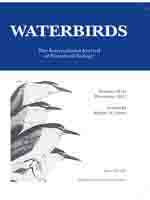The health of wildlife can be affected by the ingestion of non-edible, anthropogenic debris that mimic prey. First evidence of localized, massive ingestion of rubber bands is provided for an earthworm consumer, the White Stork (Ciconia ciconia), using nest contents and necropsies recorded in France. In 2003–2004, the prevalence of rubber bands and other debris in nests (N = 227) differed between the nine regions analyzed and decreased as distance from the nearest rubbish dump (distRD) increased. Hence, ingestion of rubber bands would occur only at some rubbish dumps. Nests with rubber bands contained 6.5 ± 2.5 units (max: 27; independent of distRD). The number of chicks was not related to the presence/absence of rubber bands in their nest. In 2008–2010, 26% of necropsied storks (N = 57: Alsace region) had rubber bands in their digestive tract. Seven instances of death due to gut occlusion by rubber bands are reported. Immature birds may be more exposed to rubber band ingestion than adults because of their lower ability at discriminating and regurgitating non-edible items, as well as their higher frequentation of rubbish dumps. The disposal of used rubber bands in a form that prevents ingestion by earthworm consumers is recommended.
How to translate text using browser tools
1 December 2011
Rubber Band Ingestion by a Rubbish Dump Dweller, the White Stork (Ciconia ciconia)
Pierre-Yves Henry,
Gérard Wey,
Gilles Balança
ACCESS THE FULL ARTICLE

Waterbirds
Vol. 34 • No. 4
December 2011
Vol. 34 • No. 4
December 2011
diet
elastic thread
environmental contamination
foraging behavior
plastic debris
pollution
refuse tip




